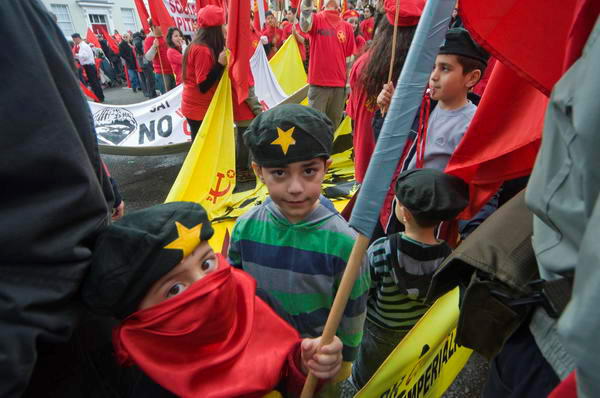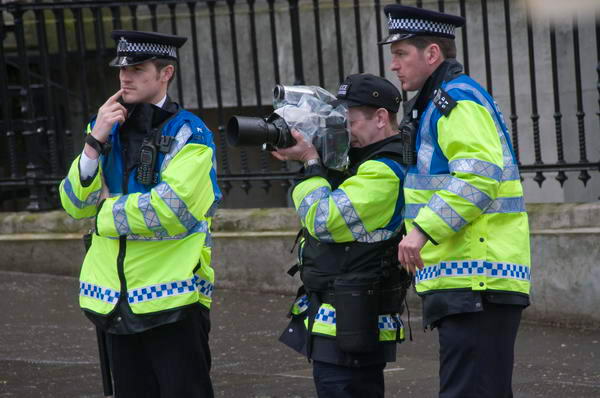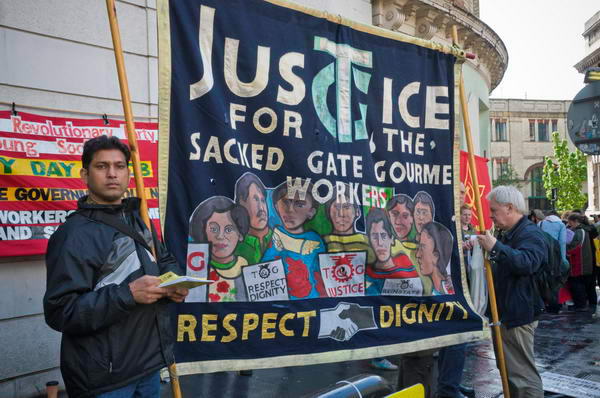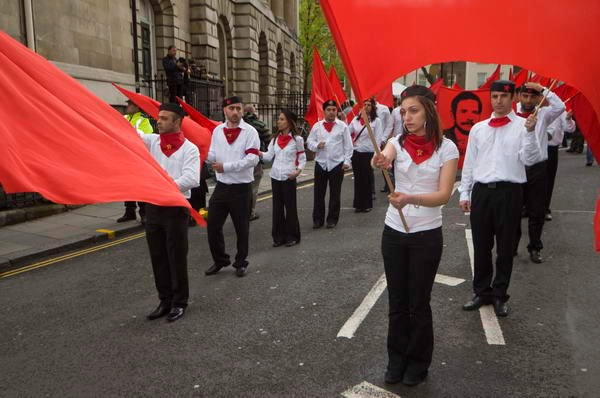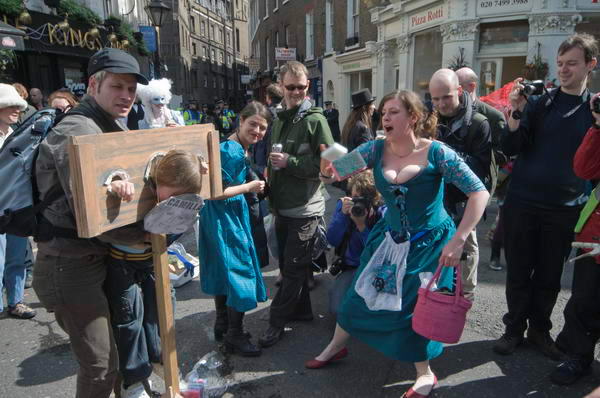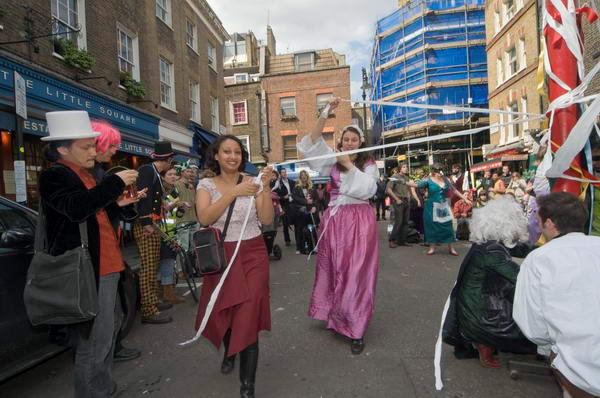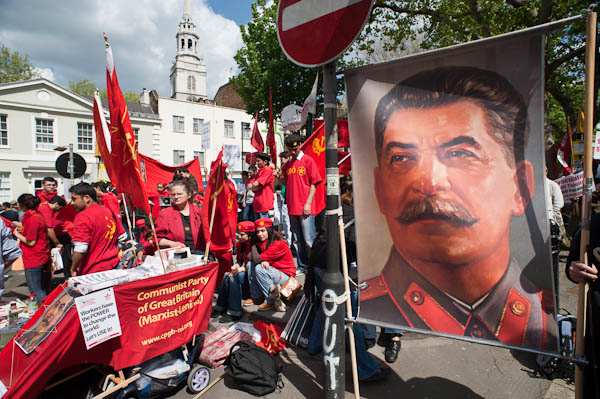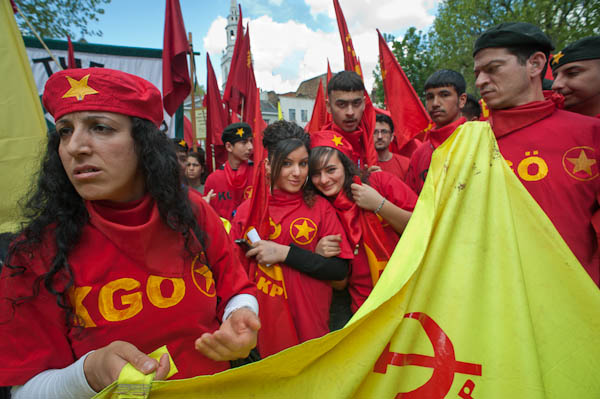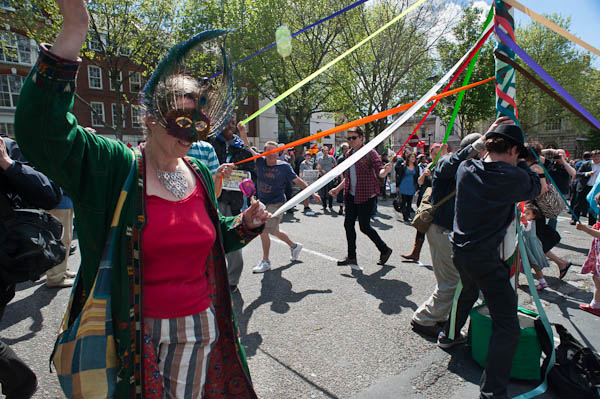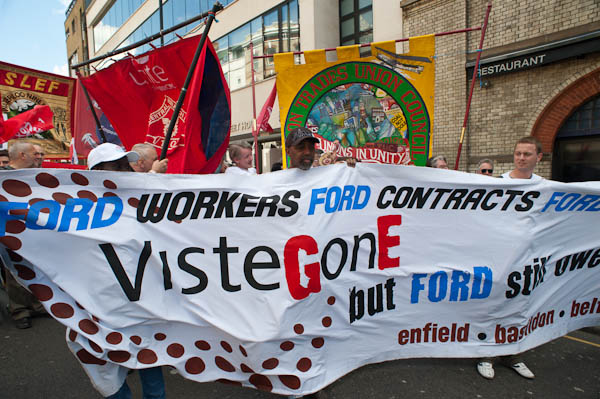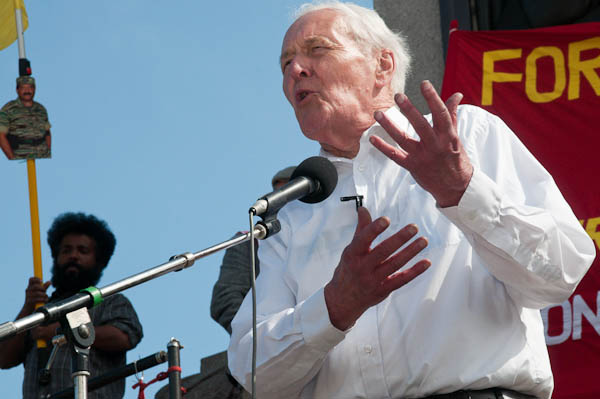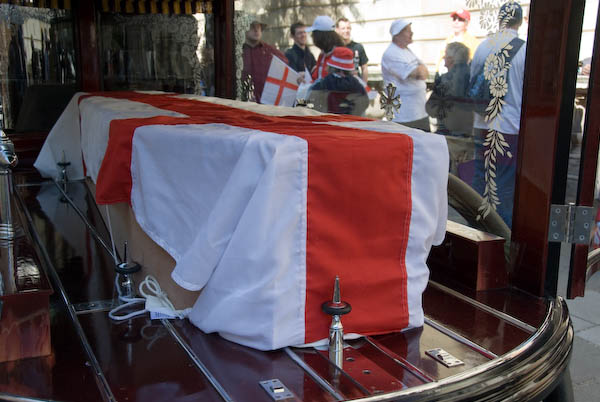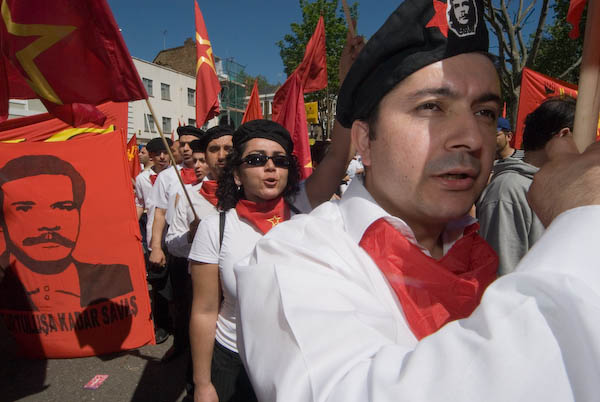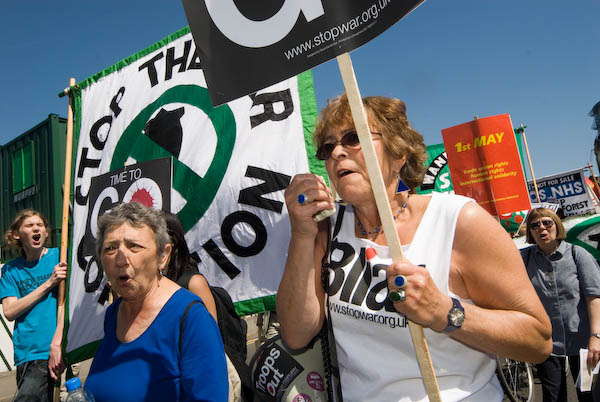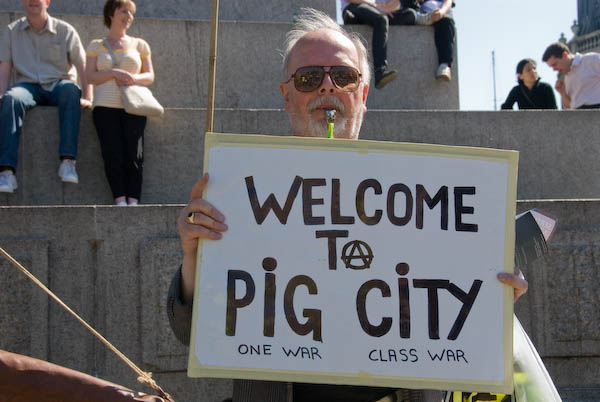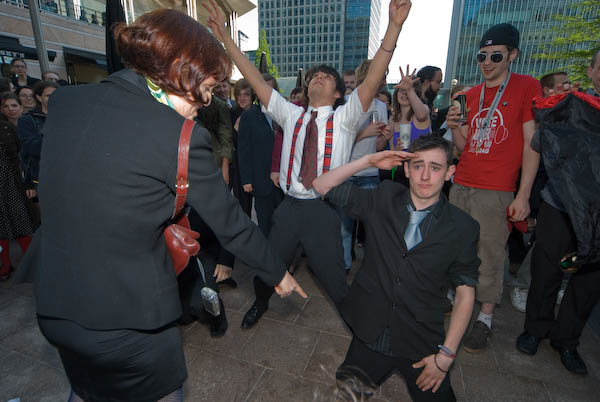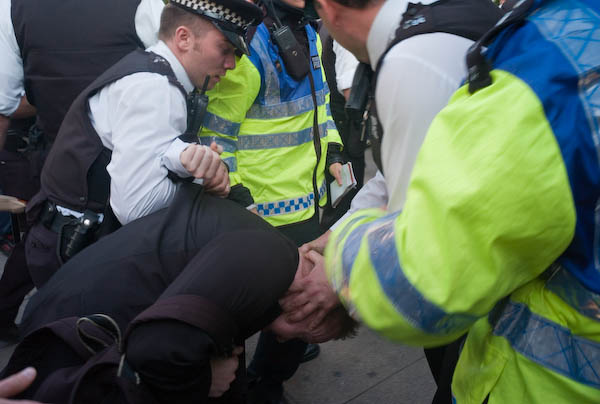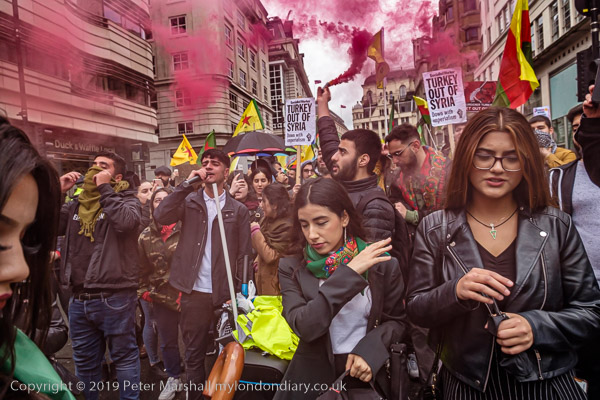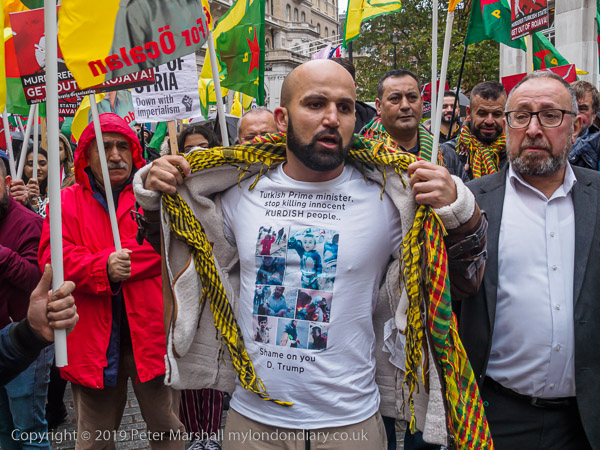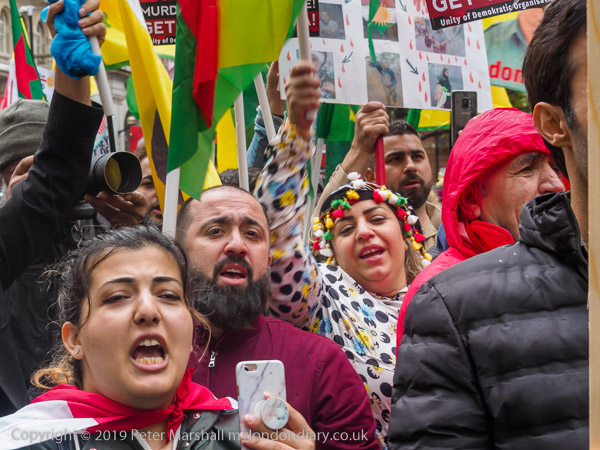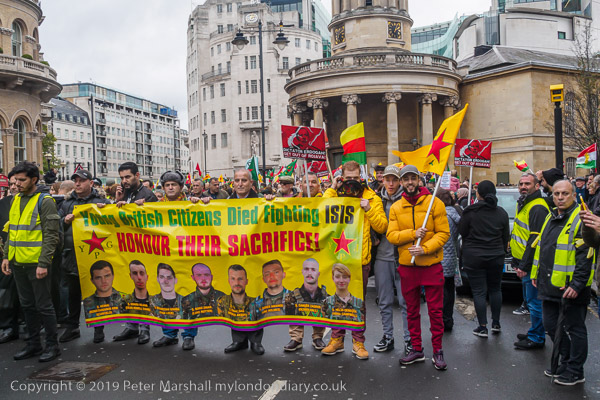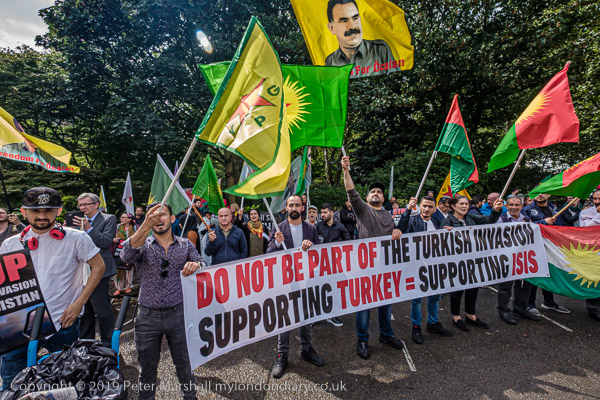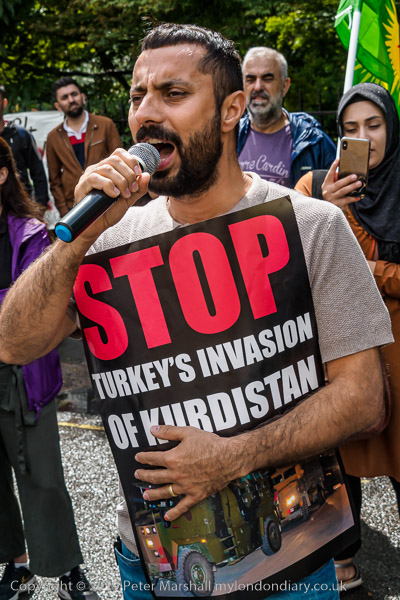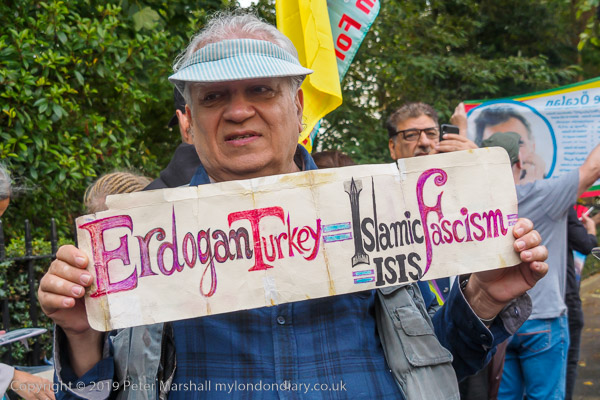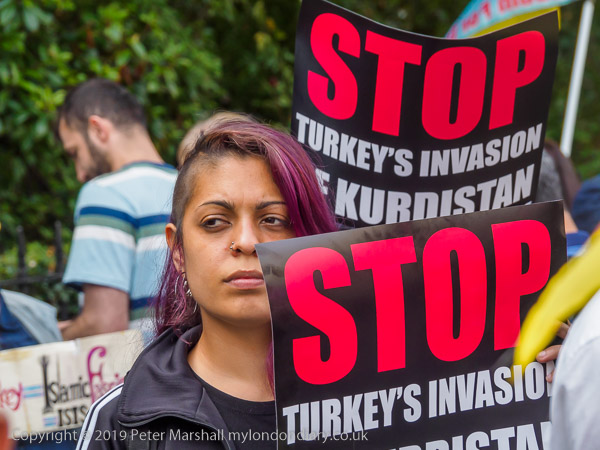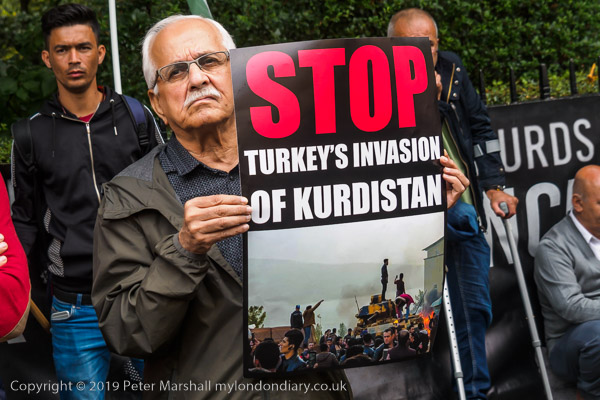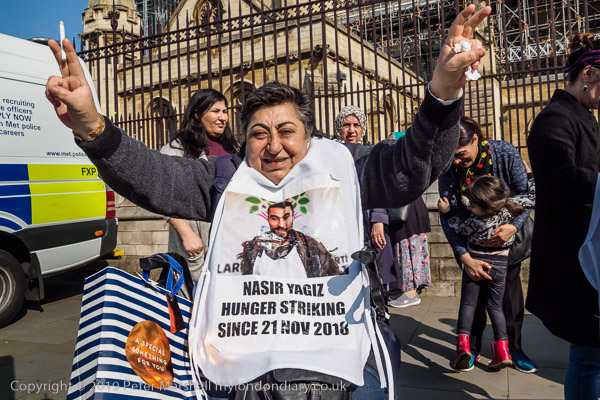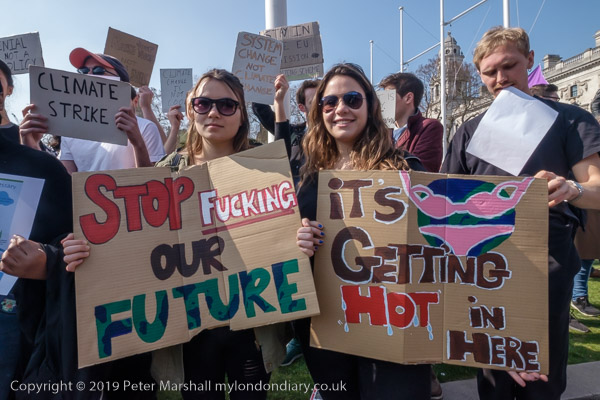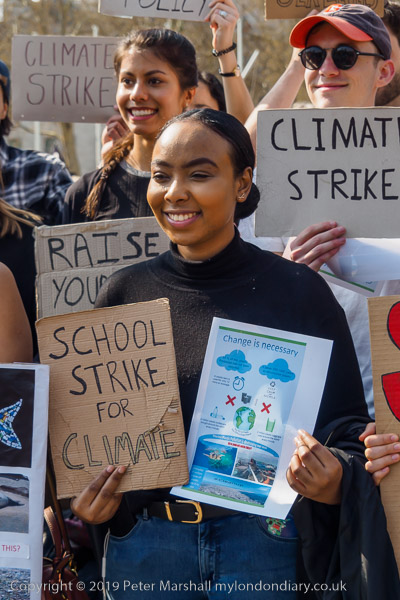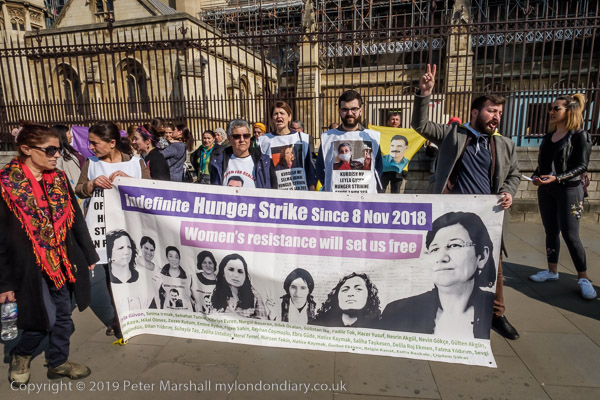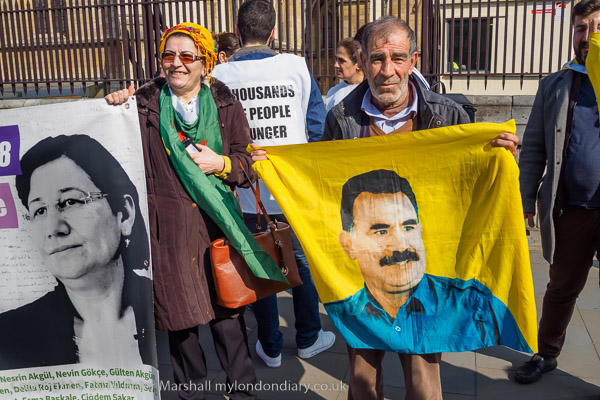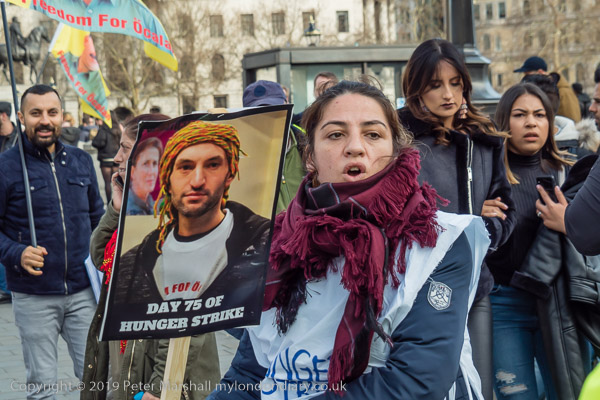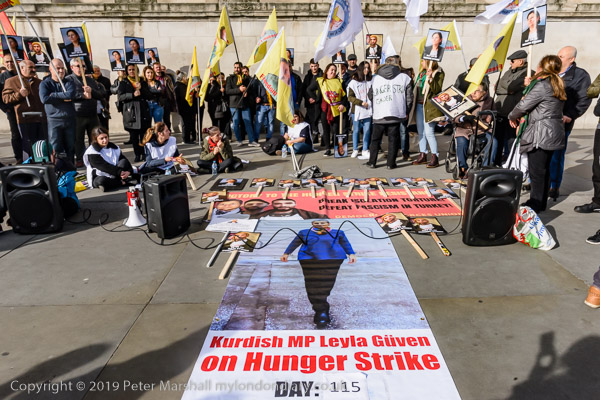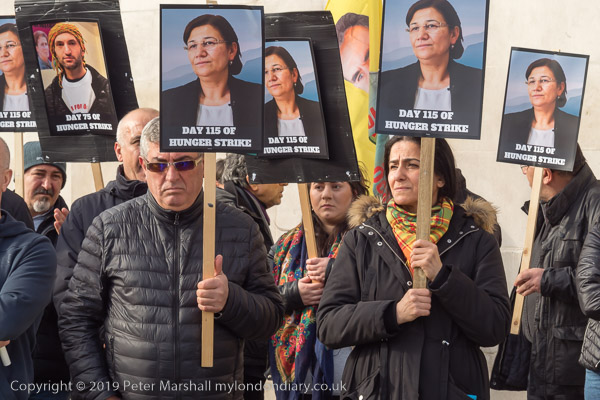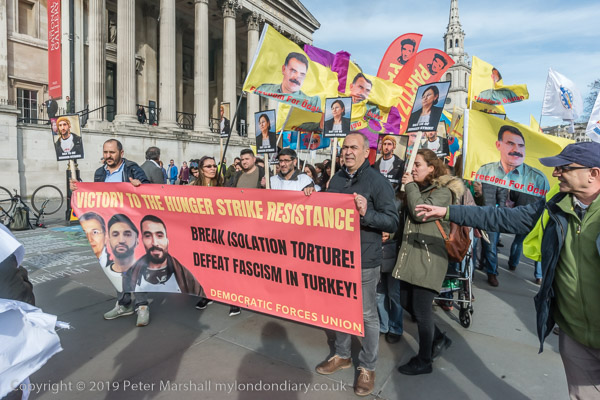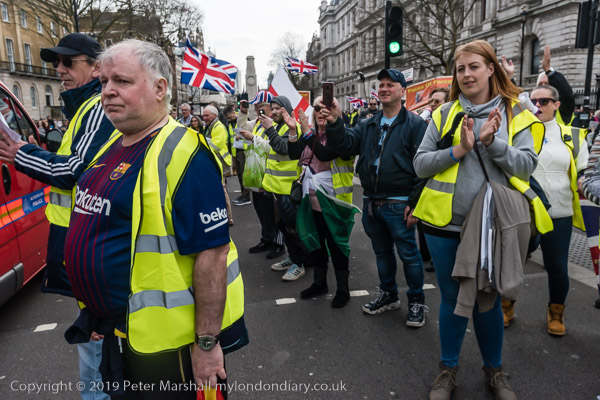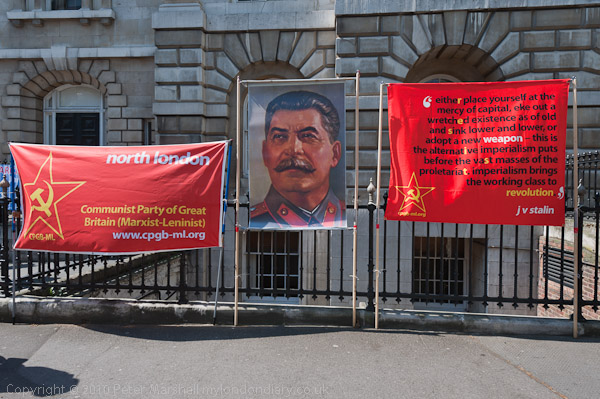
May Day 2011 was a Sunday which helped swell the numbers gathering at Clerkenwell Green, though perhaps the trade union groups were rather less numerous than usual. But of course the usual communist and socialist groups were there, and the CPGB-ML with their large image of Stalin and a banner with a quote from him with letters picked out in yellow to spell ‘resist’ along with the word revolution.
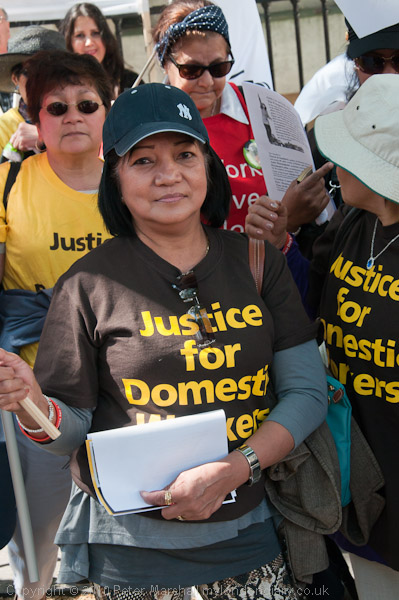
A new group in this year’s march was ‘Justice for Domestic Workers‘ (J4DW), a self-help group for migrant domestic workers and part of the hotel, restaurant and catering branch of the Unite the union. They were using the event to launch a new petition urging the UK government to change its position and endorse the 2011 ILO convention on Domestic Workers. The UK joined the ILO in 1919, but since the Tories came to power in 2010 have only ratified conventions on Maritime Labour and Fishing.
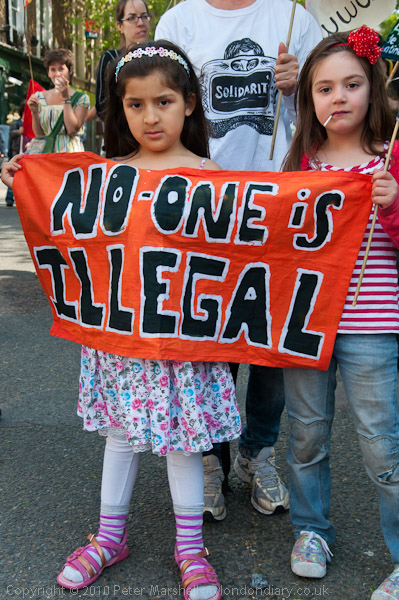
There was a large group from the Latin American Workers’ Association, calling for justice for refugees and asylum seekers, with the message ‘No-One Is Illegal’ carried by two of their younger supporters.
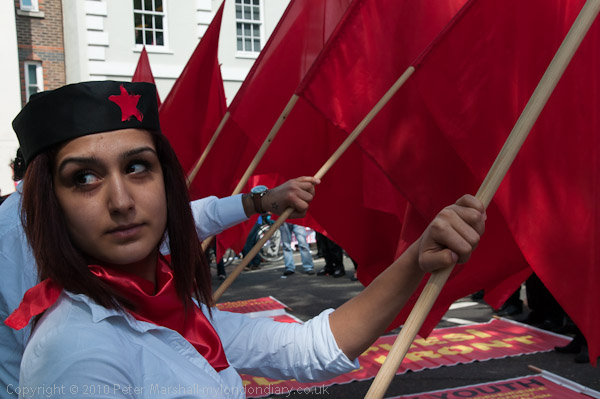
As in previous years there was a very strong representation of nationalist communist groups from London’s Turkish, Kurdish and Cypriot communities as well as a large group of Sri Lankan Tamils calling for the war criminals from Sri Lanka to be taken to the International Criminal Court and asking why the UN and NATO had not intervened when their community in Sri Lanka was facing massacre.
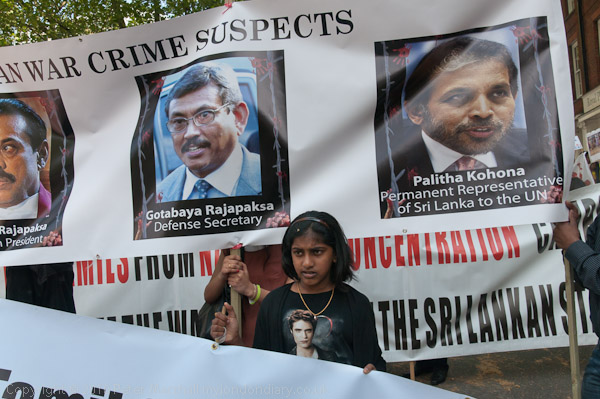
I followed the march a short distance, stopping to photograph until the end of the march had gone passed me, then decided to go home rather than continue to the rally in Trafalgar Square.
All photographs on this and my other sites, unless otherwise stated, are taken by and copyright of Peter Marshall, and are available for reproduction or can be bought as prints.
